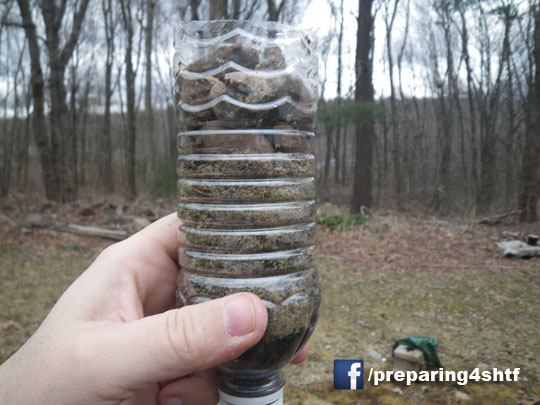
How to Put Together an Emergency Water Bottle Filter
The following methods are for emergency use only. Do not confuse filtration with purification. The following is for informational purposes only.
Emergency filtration is the removal of waterborne contaminates from a surface water source. Filtration does not destroy water borne contaminates it simply removes some but not all contaminates. Once water has been filtered, it must then be purified to destroy any harmful bacteria, pathogens and parasites that may be present.
Emergency Filtration Mediums
For best results use multiple layers of filtering mediums that range from fine to coarse. Fine mediums would include coffee filters, sand, cheesecloth, activated charcoal and charcoal you make. Coarse materials would include gravel, grasses, crushed leaves, and even certain soil.
What Can Filtration Remove From Surface Water
If layered with multiple mediums an emergency water filter can remove pesticides, herbicides, fuels, sediment, insects, debris and waterborne cysts that contain bacteria. A waterborne cyst can be described as a micro-sized seedpod that contains bacteria. Because it is essentially a pod, it can survive purification methods such as boiling and chemical treatment, so it is important that they be filtered out. The cysts will breakdown in human intestines releasing its bacteria.
A very simply emergency water filter can be made using a plastic water bottle, that you can usually find littered everywhere. You can use any food service can, coffee can, clean bucket and so forth.
The filtering device cannot be one that was used to store chemicals or any type of toxins.
If you need to filter large quantities of water such as for a household, you can use large food grade plastic buckets. The buckets must be elevated and have several holes in the bottom for the water to filter through and you must have the means to capture the filtered water. Ensure you have enough filtering medium to fill the bucket or any device at least three quarters of the way full.
The first few ounces of water will be cloudy so discard if you have an ample supply of water otherwise run back through the filter.
The listed filtering mediums can be found virtually anywhere and you can even make your own charcoal or use charcoal briquettes/chunk charcoal. Ensure any bagged charcoal you use is not pre-treated with lighter fluid or contain any other types of filler. It should state on the bag that it is 100 percent hardwood charcoal, which does not contain any filler. Crush as fine as possible.
Make charcoal by burning hardwoods. Remove once blackened and before the wood is gray/ash covered. Let cool and then finely crush.
Activated charcoal is typically made from coconut husks and once in charcoal form it is put through a chemical process to make the surface area larger for better absorption of micro-particles. Activated charcoal is what is typically used in carbon filters that are used in refrigerators and home filtration systems.
If you plan to use the filtering device for extended periods, the filtering mediums will have to be replaced periodically and there is not any definitive way to determine when. Visually inspect the top layer and note the amount of debris building up. It is important that you have ample filtering medium available for replacement if using for extended periods.
The smaller the filtering device the faster it will become clogged with debris. If you notice sediment making it though that is a good indication it is time to change the materials out.
It is important that you layer the finer materials near the bottom to filter out micro-particles. Gravel, leaves and grasses near the top will gather the larger debris, such as insects and other materials. As the water, filters down the finer material will collect and trap the microorganisms. Below are step by step instructions on how to make this filter.
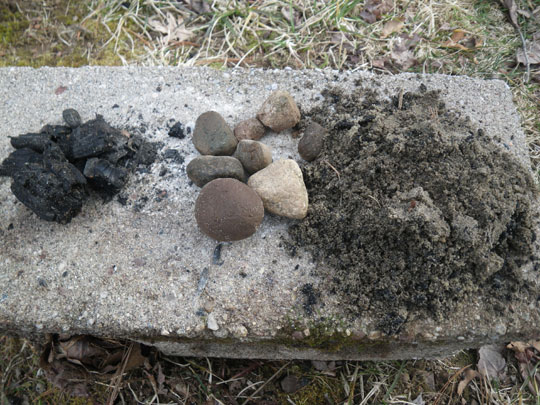
Step 1: Start by cutting off the bottom of the water bottle like the picture below.
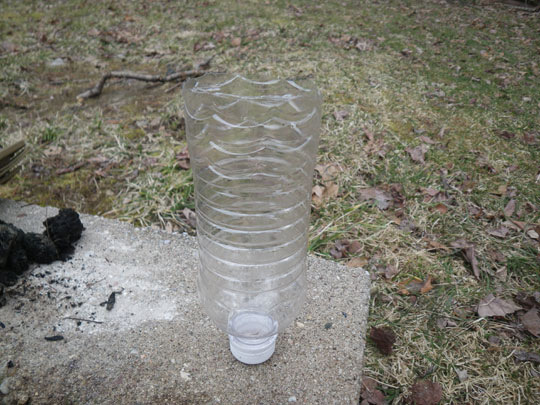
Step 2: Remove the cap from the water bottle and put a small hole in the middle of it with your knife. Once you have the hole put the cap back on the bottle.
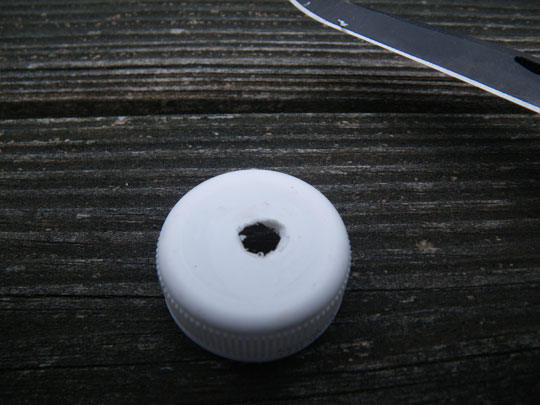
Step 3: Next take your campfire charcoal and crush it on a hard surface. Another good reason to keep a bandana in your bag is you can place the charcoal inside the bandanna to do this like pictured below. See my sixty uses for a bandana infographic. The reason I crush the charcoal is because I want the water to pass through it not go around it.
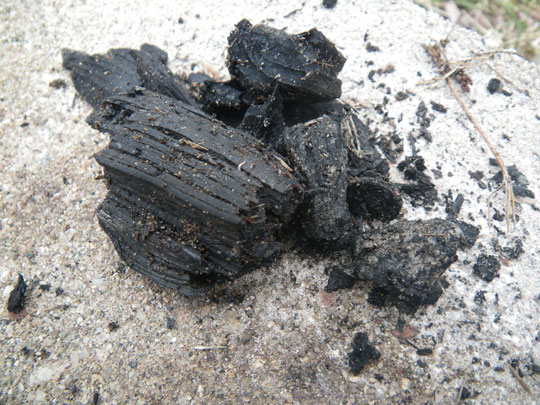
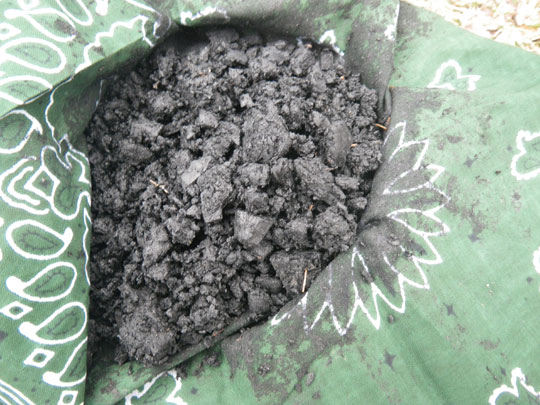
Step 4: Next take you crushed charcoal and place it in your bottle. The next step is to place a layer of sand over the charcoal in the bottle followed by a layer of rocks. When your done it should look like the picture below.

To use it your going to want to pass some water through it until the water starts to come out clear. If you have a bandana you can put it over the top of your filter to strain out any debris in the water. Remember this is only for filtering water not purifying it. I would still recommend boiling the water to kill any bacteria and making it safe to drink.